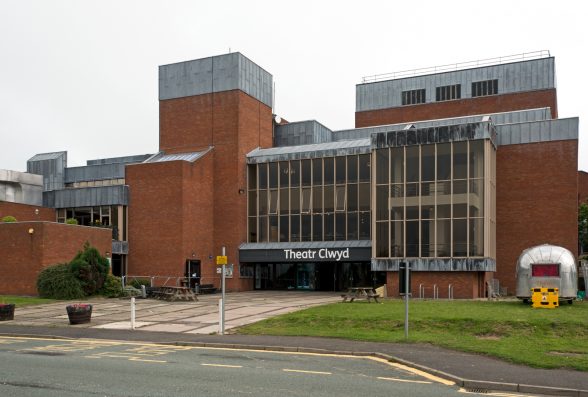This website uses cookies
This website uses cookies to enable it to function properly and to analyse how the website is used. Please click 'Close' to accept and continue using the website.



Photo: Jonathan Vining
The Twentieth Century Society objects to revised plans to alter and extend the Grade II-listed Theatr Clwyd in Mold, Wales, which it claims will cause substantial harm to this important post-war building.
C20 Society caseworker Coco Whittaker said: “The theatre is an important post-war building in Wales and its conservation should be of primary concern. We have high regard for the expertise of the architects Haworth Tompkins in designing performance venues in both new and historic contexts. That said, we object to the current application and believe the listed Theatr Clwyd could be refurbished to ensure continued use without such major interventions.”
The society objected to Haworth Tompkins’s 2019 scheme to extend and refurbish the theatre and are still opposed to the revised plans. Of chief concern is the proposal to redesign the entrance and foyer, change the building’s overall massing and remove its original windows.
The proposed front extension with a colonnaded canopy and terrace will result in the loss of the original curtain wall and C20 feels its scale and design is not sympathetic to the listed building. It will also result in the demolition of the water tower, which is a prominent feature on the building’s roof. Its removal will upset the balance of the building’s overall composition. C20 also objects to the proposals to replace the building’s original windows; window replacement is only acceptable if the original proportions and opening movements are replicated with no discernible difference, which is not the case here.
The theatre was designed by Flintshire County Architect R W Harvey and constructed between 1969 and 1976. It was built as a later phase of the civic complex for Flintshire County Council on the outskirts of Mold that had been developed during the 1960s. The theatre stands as a symbol of the county council’s remarkable investment in the arts in the post-war period, and as a statement of civic pride as part of the wider complex.
Externally the building is characteristic of 1970s civic architecture, using a limited palette of materials across a ‘landscape’ of modular units that express their individual function. It is of steel framed construction, faced in red brickwork with glazed elements and lead-covered roofs. The clustered mass of individual building units gives the impression of a range of functions (the building housed a number of theatres as well as television production facilities) as well as giving the non-public facing departments, such as rehearsal spaces, offices and workshops, an external visual representation. The theatre’s main auditorium, the Anthony Hopkins Theatre, shares similarities to other theatres from the period, the Thorndike in Leatherhead, Surrey, being the most frequently referenced comparison. Although Theatr Clwyd was intended to operate as a producing theatre and, therefore, could have adopted an experimental auditorium or stage format, a more traditional approach including a proscenium arch was used so that visiting companies and musical theatre performances could be accommodated.
Theatr Clwyd, originally the ‘Clwyd Theatre and Educational Technology Centre’, was listed at Grade II by Cadw in June 2019. Theatr Clwyd is currently one of only a small number of post-war listed buildings in Wales, reflecting its architectural quality and historic importance. The list entry describes the building as “an important example of a post war civic arts and theatre complex, the key example of this building type in Wales and one of the leading examples in the UK […] It is of special historic interest as an example of the improvements in arts provision across the UK in the post-war period.” The list entry describes the building’s modern style and the near complete level of intactness since construction.

Become a C20 member today and help save our modern design heritage.